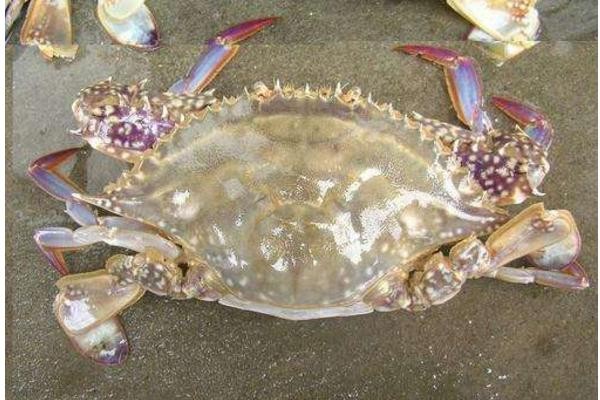
News briefing:

News briefing:
How to raise swimming crabs? Portunus crab is popular with consumers and farmers because of its high yield, low breeding cost, high nutrition and good management. However, if you want to breed portunus crab well, you must first understand the growth environment of portunus. Generally speaking, it is suitable for the growth of portunus crab. The temperature is 8-31 degrees and the salinity is in the range of 13%-38%. Now let’s talk about the operations related to swimming crab breeding.
One, the breeding preparation of swimming crab
1. Pond tidying up
The main purpose is to remove the excessive silt at the bottom of the pond, loosen the bottom of the pond and expose it to the sun, and at the same time repair the supporting facilities for aquaculture, such as pond dikes, gates, and water channels.
2, set up obstacles
After constructing the pond, some cement pipe tiles, bamboo tubes and other obstacles can be placed at the bottom of the pond to provide a resting place and hiding place for crab sprouts.
3. Breeding bait
A. The gate can be opened 15 days after the pond is cleared. In order to prevent other harmful organisms from entering the pond, the seawater can be filtered with a 60-mesh sieve and the water depth of the pond is controlled at 80cm.
B. After the pond enters the water, the fertilizer is added into chemical fertilizer to cultivate bait organisms. Nitrogen fertilizer is applied per mu of land with 1.5kg and phosphate fertilizer per mu of land is applied with 0.3kg, and the transparency of pond water is kept within 30cm.
2. Pond stocking of portunus
1, source selection
There are two main sources of crab seedlings. One is artificial cultivation, and the other is natural sea areas. Generally, the size of seedlings is 80 pieces/㎏. When choosing crab seedlings, choose a neat scale, strong weight, complete appendages, and vigor. Crab seedlings with a soft shell rate of less than 10% and disease-free.
2, stocking time
Crab fry stocking time is mainly from late May to mid-June.
3, water quality requirements
Water temperature≥18℃, daily temperature difference<8℃;
Salinity is 18-32, pH is 7.8-8.6;
Water quality, ammonia nitrogen content should be <1㎎/L water body, dissolved oxygen>5㎎/L water body, water quality transparency should be kept within the range of 30-40cm.
4. Stocking density
Generally speaking, 80-100 crabs/kg, the stocking density should be controlled at 1000-1500/mu.
3. Portunus breeding management
1. Water quality management
A. In July, the farmers have to change the water every two or three days; in August and September, the water is changed every two days; in October, the water is changed every four or five days.
B. The amount of water change and the water change interval should be adjusted reasonably according to the recent weather, water temperature and other environmental factors in various places.
2, bait feeding
A. Portunus mainly uses low-value fish, shrimp, shellfish, etc. as the main bait. The amount of bait fed should be determined according to the size of the swimming crab.
b. In the early stage of crab breeding, the amount of bait fed can be about 8% of the total weight of the crab, 12% in the middle stage, and 5% in the later stage. When the temperature is 10-15 degrees, the amount of bait fed per day It is about 3% of the total weight of the crab.
C. Follow the feeding principle of feeding once in the morning and evening, and feeding more in the morning and evening. If the average water temperature of the day is 10 degrees, there is no need to feed the bait.
3, patrol pool management
a. A patrol of the pond will be carried out in the morning and evening, mainly to observe the eating and movement of the swimming crabs. Pay attention to the changes in the pond water at all times. Check the residual bait in the pond regularly. According to the growth of the swimming crabs, adjust the feeding amount and the amount of water change in time. .
b. Due to the uncertain weather, the sun was still out just now, and it will rain after a while. Therefore, farmers need to take measures to prevent floods and typhoons in advance, and often check whether the barriers and dams of the gates are damaged or leaked. If found If there is a problem, it should be repaired as soon as possible.
4, timely harvest
A. The harvest time of swimming crabs is in late autumn, that is, when the temperature is below 15 and the weight of the swimming crabs is not increasing, the goods can be received. It is the key to high quality and high yield to catch the swimming crabs in time.
B. The catch can be decided according to whether the swimming crab is in the green crab period, the sales price, and the weather conditions. The general time is December. It should be noted that it is recommended not to catch the crab in rainy weather.
c. Crab cages or dip nets can be used when a small amount of crabs go out of the pond; when a large number of crabs go out of the pond, a net cage bag needs to be fixed at the gate, and the low tide is used to catch the portunus; when the drainage in the pond is low, iron can be used The rake slowly rakes along the bottom of the pond. When it encounters a swimming crab, it is picked up carefully, and it is fished into a basket or bucket with a cheat sheet.
D. Precautions for catching: After catching the swimming crabs, use rubber bands to tie the two feet to prevent the crabs from biting each other or escaping in the basket or bucket.
Date of opening:1970-01-01 Shop address: Main products: Store certification time:1970-01-01 08:00:00
Store Name: Principal: Contact number: email: